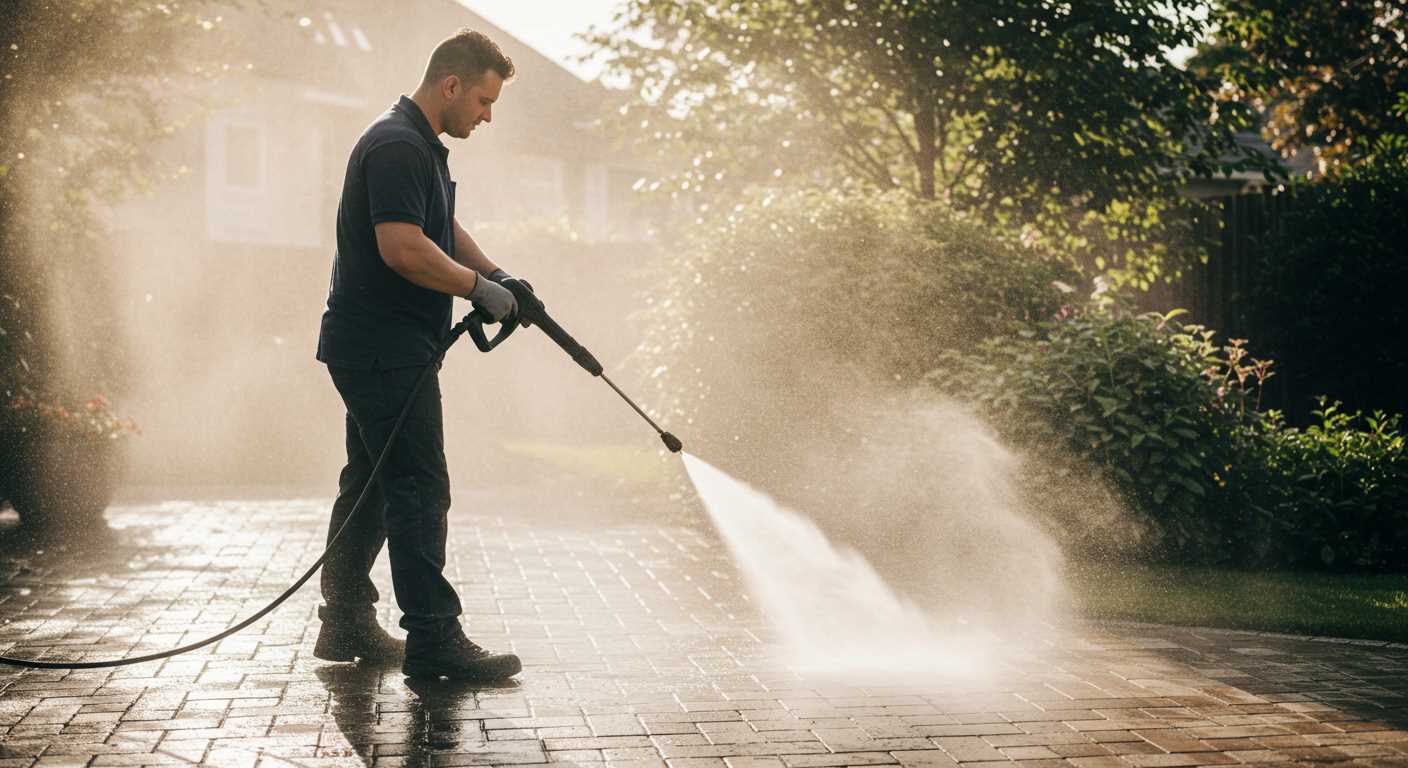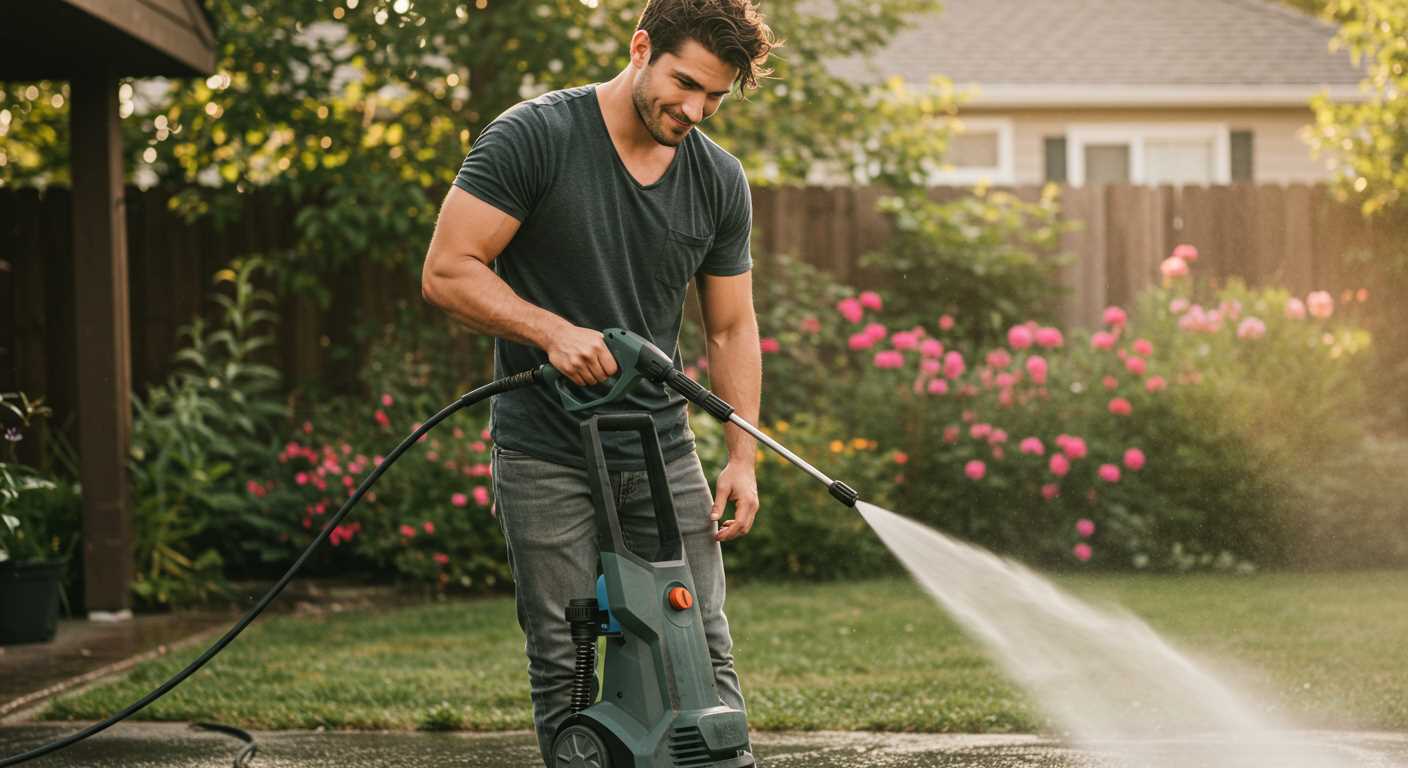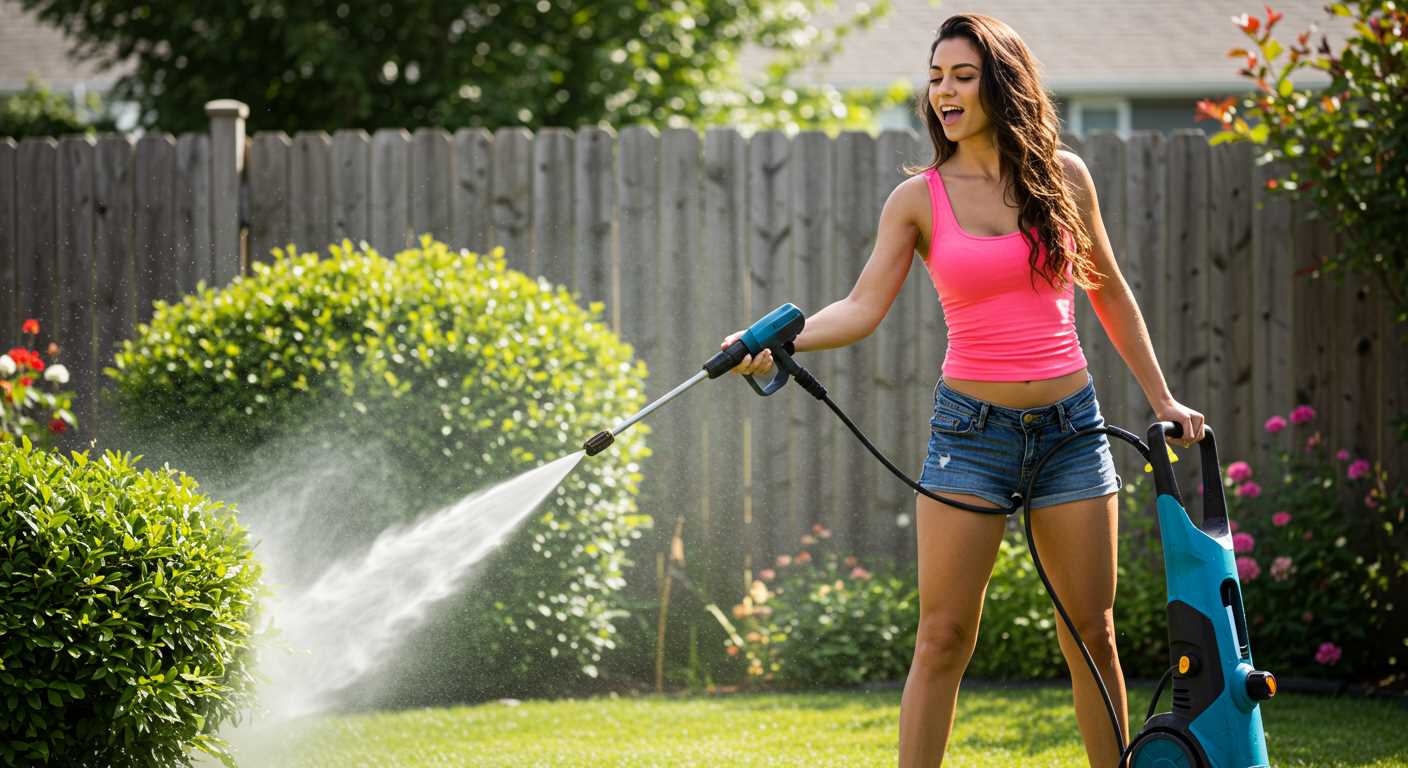



For those seeking to enhance their cleaning arsenal, converting a high-powered cleaner into a tool for clearing pipe obstructions is entirely feasible. A few modifications and the right attachments can achieve remarkable results, allowing the machine to perform tasks typically reserved for dedicated drain cleaners.
The foremost requirement is a suitable nozzle that directs the water at high pressure into the pipes. Nozzles designed for drain maintenance, particularly those that emit water towards the back, can effectively propel the device through the pipe while simultaneously dislodging blockages. Selecting the correct size and type is paramount; compatibility with existing equipment will ensure optimal performance.
In addition to the nozzle, altering the water flow rate may be necessary to suit the specific needs of pipe cleaning. Some machines allow for adjustable settings, providing the versatility required to tackle various types of obstructions. Keeping safety precautions in mind is equally important. Wearing protective gear and testing in open areas will help avoid potential mishaps.
With these adjustments in place, achieving a clean and functional drainage system is not an insurmountable challenge. A high-powered cleaner can prove to be a formidable ally in maintaining plumbing systems efficiently.
Understanding the Basics of Pressure Washers and Drain Jetters
Transforming high-power cleaning tools for various tasks demands familiarity with their operational principles. A device designed for washing exteriors employs a pump, which generates a pronounced flow of water under significant pressure. This mechanism is perfect for loosening dirt and grime on durable surfaces but isn’t specifically intended for navigating through narrow pipes.
Key Features of High-Pressure Cleaners
These machines typically feature adjustable nozzles to modify spray patterns, allowing versatility in cleaning applications. The motor’s power rating, measured in horsepower, directly influences water flow rate and pressure output. Most models offer a range of capacities suitable for different cleaning needs, from light-duty to heavy-duty tasks. Familiarity with the pressure settings ensures effective cleaning without damaging surfaces.
Drain Cleaning Tools

Contrary to standard cleaning equipment, devices focused on pipe cleaning deploy water jets designed specifically for clearing clogs and maintaining drains. They utilise special hoses that can navigate bends and turn in the plumbing. Jetting attachments produce a high-velocity stream that clears blockages by forcefully pushing debris while simultaneously preventing further build-up.
Identifying the Necessary Attachments for Conversion

To successfully modify a high-pressure cleaning unit for use as a wastewater clearing tool, specific attachments are vital. Focus on acquiring a high-quality drain cleaning nozzle, which features a design that allows for efficient water flow and optimal direction. Look for nozzles with rear-facing jets, as these create thrust that propels the tool forward through pipes while dislodging blockages.
Essential Components
The following components are essential for an effective setup:
- Drain Cleaning Nozzle: Opt for a versatile nozzle, ideally with multiple jet configurations. This flexibility allows for the targeted clearing of different types of obstructions in various pipe sizes.
- Extension Hose: Acquire a specially designed hose that can withstand higher pressures and is capable of extending your reach into deeper pipes and drains.
- Adapter Kit: Ensure compatibility between your cleaning device and the new attachments by using an appropriate adapter kit. This will facilitate a secure connection to the nozzle and hose.
Additional Considerations
For optimal performance, check the working pressure and flow rate of the cleaning machine. Ensure these specifications meet or exceed the requirements of the cleaning attachments. Consult product manuals and specifications to confirm compatibility before proceeding. Maintenance of the equipment after conversion is equally important; keep the connections clean and inspect regularly for wear to guarantee longevity.
By selecting the correct attachments, this transformation can enhance your cleaning capabilities significantly. With each component selected with care, the transition will open new avenues for tackling stubborn clogs effectively.
Step-by-Step Guide to Modifying Your Pressure Washer
First, gather necessary tools: a wrench, screwdriver, and hose clamps. Ensure your cleaning device is turned off and disconnected from power. Drain any remaining water from the system.
Next, detach the standard spray wand. This allows for attachment of specialized nozzles tailored for drainage purposes. Replace it with a jetting nozzle that fits snugly. Confirm compatibility with the model.
After securing the new nozzle, install a flexible drainage hose. This should be resistant to high pressure and fit the connectors of your machinery. Use hose clamps to ensure no leaks occur during operation.
Modify the water supply line. A Y-connector can be added if you intend to simultaneously use the original sprayer while clearing blockages. Ensure all connections are airtight to prevent any loss of pressure.
Adjust the pressure settings on the device to an appropriate level. For most drainage tasks, a higher psi is beneficial, but verify the limitations of your equipment model to avoid damage.
Prior to starting the machine, test all connections for leaks. Secure any loose parts and check the stability of the nozzle and hose. Following this, you can proceed with your cleaning task.
Finally, after each use, inspect attachments for wear and tear. Regular maintenance guarantees longevity and effectiveness of the modified setup. Store all components in a dry place to prevent deterioration.
Safety Precautions When Using a Converted Washer
Always wear protective gear, including safety goggles and gloves. This prevents injury from water spray and debris. Choose footwear that offers good grip and avoids slips in wet conditions.
Check the pressure rating of your unit. Ensure it meets the requirements for your specific application. Operating above the safe pressure limit can lead to equipment failure or personal injury.
Before beginning any task, inspect all attachments for damage. Look for cracks or wear in hoses and nozzles. Replace any compromised parts to avoid accidents while in use.
Maintain a stable stance and avoid overreaching. This reduces the risk of losing balance, particularly when directing a powerful stream. Work in a safe area free from obstacles that could cause falls.
Never aim the nozzle at people, animals, or electrical systems. The force of the water can cause severe injury or damage. Always direct the stream away from yourself and others.
Keep a safe distance from the surface being cleaned. This heightens control over the spray, preventing unintended damage to the surrounding area. Adjust the tip as necessary to achieve optimal results without excessive force.
Be aware of your surroundings, especially when working outdoors. Identify potential hazards such as loose objects or steep slopes. Clear the area to mitigate risks before commencing work.
After each use, properly store the equipment. Disconnect hoses and nozzles, ensuring all components are dry and free from debris. This prolongs the life of the unit and ensures safe operation for future tasks.
Familiarise yourself with the manual specific to your model. Manufacturer guidelines contain critical safety information and operational procedures tailored to your system.
Follow local regulations regarding wastewater disposal. Collect and dispose of any materials responsibly, preventing environmental harm.
Common Issues and Troubleshooting During the Conversion

During the modification process, several challenges may arise that could affect performance. Problems commonly encountered include pressure inconsistencies, hose clogs, and attachment incompatibilities. It’s crucial to address these issues promptly to ensure reliable results.
One frequent issue is inadequate water pressure. This can result from a blocked intake filter or an unsuitable nozzle. Regularly inspect the filter for debris and choose compatible attachments designed for high-pressure applications.
Clogs in the hose are also a common problem, particularly when facing stubborn blockages. I recommend using a flexible cleaning rod to dislodge any debris accumulated within the hose. Additionally, ensure that the hose connections are secure to prevent leaks that may diminish pressure efficiency.
Attachment mismatches can cause headaches during the transition. Check that all fittings are compatible with the existing equipment. Referencing product manuals and manufacturer specifications can save time and frustration.
To ensure ongoing efficiency, I suggest performing regular maintenance on your device. This includes cleaning filters, checking seals, and inspecting hoses for wear and tear. Keeping a maintenance log can help identify patterns and preemptively address potential issues.
| Issue | Potential Cause | Solution |
|---|---|---|
| Inadequate pressure | Blocked intake filter | Clean or replace filter |
| Hose clogs | Debris accumulation | Use a cleaning rod |
| Leaks at connections | Loose fittings | Tighten connections |
| Incompatible attachments | Mismatch with existing device | Verify compatibility before purchase |
By being proactive and following these troubleshooting guidelines, the process will yield more consistent and favourable outcomes when transitioning from a standard cleaning apparatus to a high-pressure cleaning tool for drains.
Testing the Performance of Your Drain Jetter Setup
To evaluate the functionality of the modified cleaning equipment, start by running a series of tests in a controlled environment. Select a section of pipe that is representative of typical blockages encountered in real-world scenarios.
Begin by setting up the machine according to your conversion plan. Attach the specialized nozzle designed for drain clearing to secure optimal water flow. Ensure all connections are tight to prevent leaks. Fill the tank with clean water and prime the system as outlined in your previous adjustments.
Conduct a test run without any obstructions first. Observe the pressure reading to understand how well the sprayer is operating. A typical performance benchmark is reaching a pressure of at least 2000 PSI for effective drain cleaning. Check the nozzle’s pattern to confirm it produces a focused stream, which is crucial for dislodging debris.
Once baseline performance is established, introduce a simulated blockage, such as a mix of grease and small debris. Gradually increase the flow pressure while maintaining a steady position of the nozzle. Monitor the ability of the equipment to clear the obstruction. Timing the duration taken to remove the blockage will provide insight into the overall efficiency of your setup.
Document the performance metrics: pressure levels, time taken for clearing, and the type of nozzle used. This data will assist in fine-tuning the arrangement for optimal results. Repeating these tests with different types of nozzles and pressures can further enhance cleaning capabilities.
Finally, feedback from these evaluations is invaluable. If performance does not meet expectations, reconsider the components involved, such as the hose diameter or the power source. Adjustments and tests will lead to improved outcomes in your cleaning endeavors.
Maintenance Tips for Your Converted Drain Jetter

Regularly check the water intake filter to ensure it remains unclogged. This small step prevents debris from entering the system and causing blockages or damaging internal components.
Inspect hose connections for leaks or wear. Damaged hoses can reduce performance and lead to costly repairs. Replace hoses at the first sign of degradation.
- Use a high-quality sealant for hose fittings to prevent leaks.
- Ensure all connections are tightly secured before every use.
Monitor the nozzle condition. The jetting nozzle focuses water pressure, so any wear can affect performance. Clean and replace nozzles as necessary to maintain effective operation.
Ensure the motor or engine is lubricated according to the manufacturer’s recommendations. Regular lubrication reduces friction and prolongs the life of the equipment.
Winterize the system if you live in a region with freezing temperatures. Any residual water can freeze, expanding and potentially causing damage. Use a pump out solution to clear the system.
- Run the machine with a suitable winterising fluid.
- Store equipment in a dry, frost-free location.
Conduct routine performance tests. A slight drop in pressure might indicate a need for maintenance or possible obstruction in the system.
Keep the unit clean after each use. Dirt and grime can cause corrosion over time and hinder performance. Use a damp cloth to wipe down exterior surfaces and check for any signs of wear.
Lastly, maintain an organised workspace. Storing tools and equipment properly will not only extend their lifespan but also help in troubleshooting future issues more efficiently.










